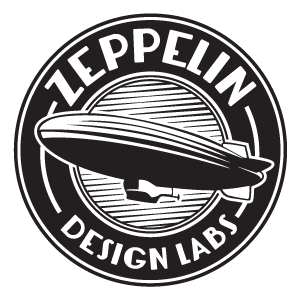Home › Forums › Percolator Tube Amp Forum › Percolator Tips & Tricks › Some things we learned along the way
Tagged: percolator, tips
- This topic has 1 reply, 2 voices, and was last updated 7 years, 1 month ago by
zdlAdmin.
-
AuthorPosts
-
tpancake
ParticipantWe recently finished a Percolator and Speaker Cabinet build. We are very happy with the end product! But, we definitely had some learning curve moments. So, some hints, tips and thoughts:
1) Heating the grill cover/speaker cover is TRICKY! We melted a hole in the Percolator grill cover on first try, basically because heating it caused the perfectly straight fabric lines to get wavy and I attempted to “straighten” them by adding heat. Bad idea. On the second try (after getting a replacement cover), I didn’t bother doing the heat shrinking on the Percolator grill cover – it was tight enough without heat and I didn’t have to worry about messing up those nice, straight lines. The Speaker Cabinet cover did require heating, and boy was I nervous. I did get it to tighten up, but the nice straight lines got a little wavy, which really bugs me. There has to be a better way to evenly shrink the covers so as to not get the wavy lines. Heating in an oven at a certain temp, for a certain amount of time? Hey Glen – put your engineering team on that!
2) Having a good soldering iron and using very fine soldier is CRITICAL. This is covered in the written instructions right at the beginning – which we (of course) ignored. We started with a not-so-great soldering iron and solder that was too thick (learning curve – never had done electronics before). Boy, did we regret that. You should be able to get both for under $30, so not a huge investment, and definitely worth it. Pay attention to the “What You Will Need Lists” – they are good, and accurate. Having all those tools and materials makes it go WAY better! Also, learned this the hard way: Be careful about holding the soldering iron on the circuit board for a long length of time (like, more than 15 seconds – in our case the this was due to initially using solder that was too thick in diameter – so if you use the thinner solder they suggest you shouldn’t have to worry). We damaged the circuit board which required some work around, and didn’t find the damage until the multi-meter testing at the end of the build.
3) On the electronics, overall, I underestimated the scope of the job. This is NOT a QUICK build if you are a novice like I was. It’s “doable” – the written and video guides are very good, so don’t be afraid to do it if you are also a novice. Plan on 8-10 hours. I would suggest it be done over several sittings. If you get it done quicker, celebrate.
ZEPPELIN TEAM: I know there are lots of composite pictures throughout, but it would be helpful to have a straight “over-the-top view” finished picture of the circuit board at the point of finishing the resistor install, so confirm all the resistors in in the right place and in the right orientation. We had to “freeze” a picture in the video to try to make sure we were on track (personally, we used the video more than the written instructions). Another picture of the finished board after all the circuits are installed (before wiring the EIC and transformers and such) would be helpful, too.
4) Use good wood glue. Application: The frame for the Percolator grill cover needs to be firm to receive the staples that hold the grill cover fabric.
5) 2 coats of wipe-on satin poly is sufficient, but 3 was noticeably better. If you like a nice wood finish, plan on a minimum 3 coats. If my son was patient enough to wait just a little longer to finish the project (or, maybe it was me), I would have done 4. I think the 4th coat would have filled in the end grain (that was sanded very smooth to begin with, but it’s still end grain) completely.
6) You might consider going up one size on drill bits they recommend for pre-drilling. Where they recommend 1/16, consider 3/32 or 5/64 if you have it. One example application of this is when you are installing the grill cover (one of the final steps). The 1/16 hole is difficult to insert the screw into without stripping it. We upped it to 3/32 on the second 2 holes and it is was much easier.
7) On cutting the grill cover fabric, STOP SHORT of the “line” you have chosen. They mention this in the video, but they don’t emphasize it much. If you go right up to the “line”, you will see a break in the corners after install. Stop 2-3 threads short of your chosen line. You’ll be happy you did!
[May add more later, but wanted to post while “fresh”]
Again, overall VERY HAPPY with the outcome. The amp sounds amazing!
zdlAdmin
KeymasterThese are great observations, Tim. Thanks for taking the time to share your experience with us all!
-
AuthorPosts



